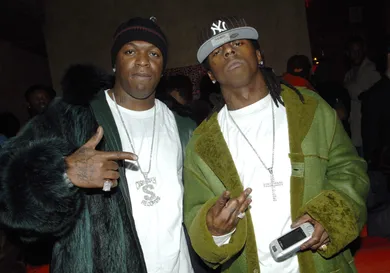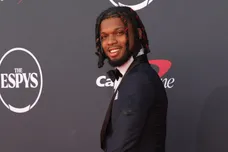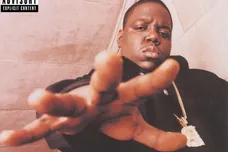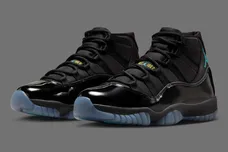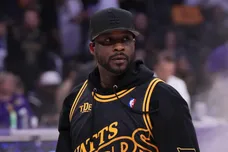On the surface, the music video for “Bling Bling” may feel like a forgettable bit from a bygone era. Status symbols color the NOLA scenery of Rigolet’s Marina: producer Mannie Fresh exits a helicopter carrying a hefty briefcase of cash; scantily-clad women clamor to attract camera time; and a convoy of luxury vehicles coast over the canal. Yet beneath the big budget visuals and expensive toys lies an illustrious entry in the Cash Money archive, one that would become a defining moment in rap folklore. The all-pervading 1999 radio hit was more than just a statement; it retooled the conspicuous consumption of the genre through a slang catchphrase that embodied preposterous stunting and undeniable virality.
For a song that was officially credited to rapper B.G., “Bling Bling” stands as an overarching, if abused, touchstone reference of 2000s hip hop. It’s a vital chapter in understanding Lil Wayne, the term’s creator and a once-in-a-generation talent from the Ninth Ward Projects who sculpted the parameters of modern rap superstardom. Following in the footsteps of Cash Money Records founders Bryan “Birdman” and Ronald “Slim” Williams, Weezy and his fellow Hot Boys (Juvenile, B.G., and Turk) transcended their initial regional success and grew into larger-than-life movers and shakers of pop culture. Augmented by the polished Photoshop work of the Pen & Pixel dynasty, the elite Cash Money Millionaires posse became a force to be reckoned with, churning out a seemingly endless flow of material with ease. “I said, ‘We gotta do it bigger than everybody,’” Mannie Fresh recounted to The Fader.
“Bling Bling” was an ostentatious “They Did That moment.” What started as a conversational adlib snowballed into a genius high-water mark that culminated in an Oxford (2003) and Merriam Webster’s (2006) dictionary addition. “That song blew up. I mean they named the whole era off that: the Bling Era,” said former BET Rap City host Big Tigger. In the wake of the deaths of Biggie and Tupac, two of the genre’s most self-serious emcees, the game-changing Bling Era diverted attention and offered a much-needed distraction from the tragedies of 9/11 and the subsequent Iraq War. The ghetto-fabulous and hard-edged sophistication that had characterized the early to mid ‘90s faded into nonexistence, with juggernauts like Jay-Z (“Big Pimpin’”) and Puff Daddy (“All About the Benjamins”) offering early inklings of what was to come. Style and quality were quickly swallowed up in the allure of size and carats, and opulence for the sake of opulence emerged as the new name of the game.
Ron Galella, Ltd./WireImage/Getty Images
Although jewelry and extravagant displays have long been a staple of hip hop’s diet, “Bling Bling” gifted the American lexicon a revolutionary descriptor that even the legendary Slick Rick would have envied. The genre’s new clientele were eager to buy into the reckless indulgence and lively, one-dimensional machismo, so it’s no surprise that the novel vocabulary magnified the swathe of superficial content that was copy-pasted at will. Flooded Figaros, video vixens, and brazen money boasts came to define a new millennia that craved visually-stunning entertainment above all else.
Still, the oversized and bedazzled accessories were dwarfed by the characters that donned them. Soulja Boy, one of the early architects of the viral music moment, had all the accoutrements: comically-oversized necklaces were complemented by gaudy bags, headware, and clothing. He brought his “Pretty Boy Swag” to life with a flagship “The World is Yours” piece, and at one point claimed to have spent over $3 million on jewelry. The boisterous Lil Jon paraded around with a blinding “pimp chalice” and custom “Crunk Ain’t Dead” chain that could’ve been used by the mafia as a deadweight for body disposal. The 3,756 genuine round-cut white diamond piece, which weighed a whopping five pounds and stood nearly eight inches tall, was worth a grand total of $500,000 and was crowned by Guinness as the “largest diamond pendant” in the world. Houston’s Paul Wall, who sported trendsetting baggy clothes and a shimmering mouthful of dental work, helped popularize the mouth-watering imagery of spinning rims on candy-painted Cadillacs. Nelly, the king of pop rap at the time, bequeathed a valuable contribution to the Bling Era with “Grillz” featuring the aforementioned “People’s Champ,” Ali & Gipp, and renowned grill craftsman Johnny Dang. It was an instant success that inspired middle schoolers everywhere to replicate the titular accessory using tin foil. Paul Wall delivered the song’s kicker: "Open up my mouth and you can see more carrots than my salad."
Frederick M. Brown/Getty Images
“Bling Bling” also showcased the growing power of the music video as a means of glorifying the spoils of fame and fortune. T.I., the self-described King of the South, took it to the automotive scene on “24’s,” a song that re-upped the “money, hoes, cars and clothes” motif and made an anthem of it. “I put Lamborghini doors on that Escalade” graduated from an imaginative 50 Cent one-liner on The Game’s “How We Do” to a Bling Era calling card. And Swishahouse’s “Still Tippin’,” featuring Mike Jones, Slim Thug, and Paul Wall, built on the Cash Money blueprint to create a deep-fried classic. Even the NBA took note. Although the marriage between basketball and hip hop has been extensively catalogued, the Bling Era was undoubtedly the honeymoon period. It reached its zenith with the And1 mixtapes and Allen Iverson, a player whose uncompromising attitude and trademark ensemble forced the league to create a detailed dress code in response.
The strange, meandering path of the “Bling Bling” aesthetic can be traced from the stages of rap shows, to professional athletes, to high school locker rooms, all the way down to white suburban soccer moms, as satirically illustrated by a 2004 animated MTV spot that ended with the statement “RIP bling-bling 1997-2003.” It catapulted to mainstream popularity in stunning fashion, but sputtered out as a radical and unstable trend due to deteriorating socioeconomic conditions and increasing political awareness. The prolonged economic correction course ran parallel to the renewed desire for creativity and innovation. Even Mannie Fresh admitted as much in a 2003 interview with Vibe: “the bling-bling era wasn’t the ‘message-important’ era.”
Though the lyrical composition wasn’t all that ambitious, the Bling Era’s 15 minutes of fame was an indelible juncture for the billion dollar hip hop industry. Substance took a back seat to gaudy excess that was loud and virtually impossible to ignore. The hip hop memorabilia that materialized as a result of Cash Money’s pioneering ingenuity came to function not only as means of flaunting wealth, but also showcasing rap allegiances and label loyalties. Multiplatinum cliques like Cam’ron’s The Diplomats, Gucci Mane’s 1017 Bricksquad, and Master P’s No Limit Records helped put a thriving subculture on the map by mixing flashy lifestyles with the streets. The blatant and outrageous materialism that stemmed from “Bling Bling” eventually grew stale, but it successfully catered to an audience that yearned for an escape, and proved the cheeky staying power of Shirley Bassey’s claim: “diamonds are forever.”
